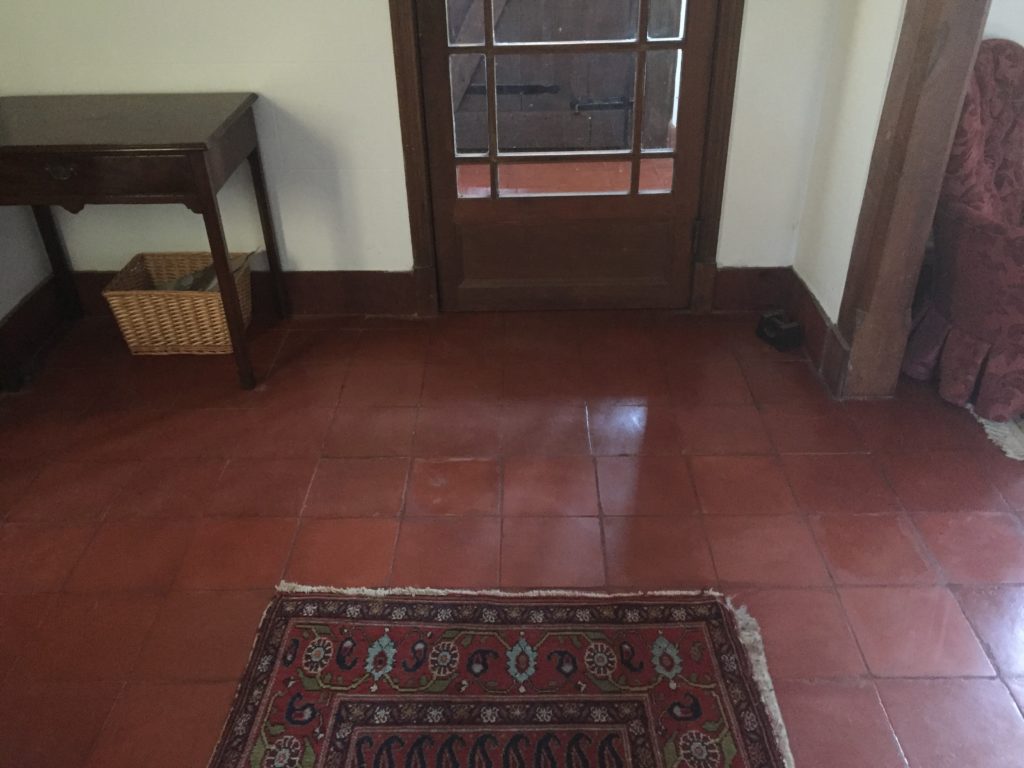Wednesday, December 12th, 2018

Today, the hallway floor looks normal again after its recent open surgery. Its wound has healed and you’d never know that three weeks ago it suffered a severe trauma when a major artery in the form of a central heating pipe burst beneath its red-tiled skin. Luckily the plumber happened to be here when the crisis occurred. We were chatting in the hallway when we heard the tell-tale sound of a sudden, thunderous rush of water not far from where we were standing. Guests were due to arrive next day, so I had to cancel them immediately as there wouldn’t be any heating and cold nights were forecast. My plumber then began to look for the source of the leak. Knowing that it was in or near the hallway helped to locate the rusted pipe. We knew it had to be underground because there was no sign of water leaking from the ceiling or any of the exposed pipes.

Some of these old steel pipes date from 1948. To replace all of them would involve digging up vast areas of tile and concrete. The best we can do is to deal with them as and when individual pipes or sections fail. Having found the rotten pipe, the plumber removed the whole section and fitted a copper one in its place with brass connectors at each end. This left us with the problem of how to repair the gaping wound.

Unfortunately, quarry tiles like these are no longer manufactured. They measure 9 inches by 9 inches and are one-inch thick. Replacing the broken ones (and it’s virtually impossible to get them up without breaking them) is not easy. Fortunately, one of the reclamation yards in the area had some nine-by-nines in stock, though they were not as thick and were slightly lighter in colour. However, after building up the concrete to the correct height and applying red-tinted cement and red wax tile polish to the unsealed tiles, you can barely see the scar.











